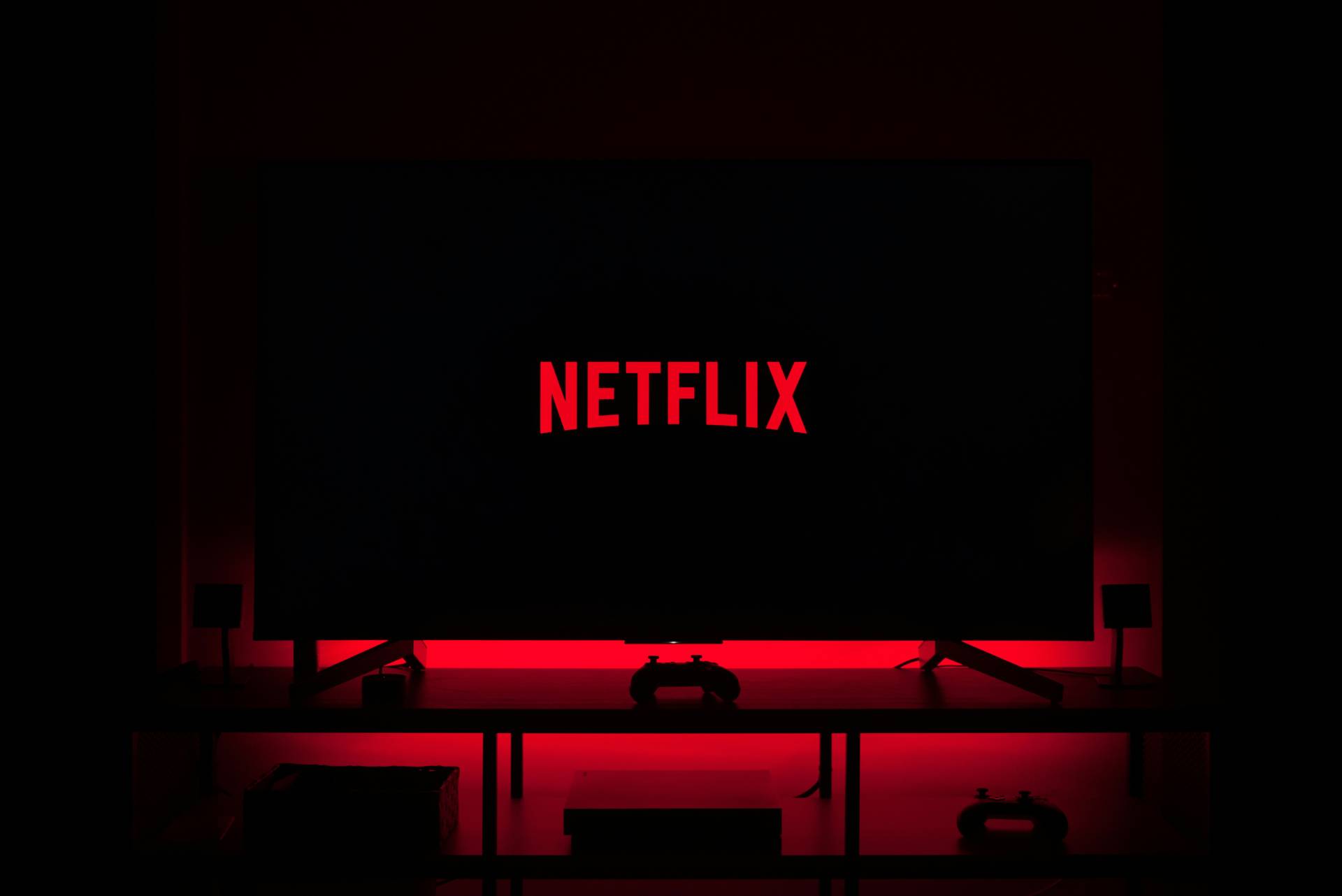Answer: Netflix had around 260 million paid subscribers worldwide as of the fourth quarter of 2023.
Netflix, the popular video streaming service, has experienced significant growth in its subscriber base over the years. With its extensive library of TV shows, movies, and original content, Netflix has become a household name for entertainment. In this article, we will delve into the number of subscribers Netflix has and explore its audience demographics, recent business strategies, and future plans.
Netflix’s Subscriber Growth
Netflix has experienced phenomenal subscriber growth, demonstrating its dominance and resilience in the highly competitive streaming market. As of the fourth quarter of 2023, Netflix reported a staggering 260 million paid subscribers globally. This increase, adding over 13 million subscribers in just one quarter, underscores the platform’s enduring appeal and strategic prowess in content and global reach.
Particularly noteworthy is the growth in the EMEA region (Europe, Middle East, and Africa), which now accounts for over 88 million of Netflix’s total subscribers. This regional success is indicative of Netflix’s effective localization strategies and its ability to cater to diverse tastes and preferences across different cultures and languages.
The final quarter of 2023 marked a historical peak for Netflix, with the company securing the largest subscriber increase during a holiday season, with an addition of 13.1 million subscribers. This exceeded analyst projections and highlighted the company’s ability to captivate audiences worldwide, even amidst escalating competition from other streaming services.
This unprecedented growth is a testament to several factors. First, Netflix’s investment in original content has paid off, attracting a broad audience with hit series and films across various genres. Second, its strategic pricing models, including the introduction of an ad-supported tier, have made the service accessible to a wider range of consumers. Finally, Netflix’s continuous expansion into new international markets has broadened its subscriber base, contributing to its global dominance.
The success story of Netflix’s subscriber growth is not just about numbers but about the platform’s ability to adapt and innovate. Despite new entrants and evolving viewer habits, Netflix has continued to lead the way, proving its status as a titan in the streaming industry. The company’s focus on customer satisfaction, content diversity, and technological innovation has set a high standard, influencing industry trends and consumer expectations.
As the streaming landscape evolves, Netflix’s subscriber growth remains a key metric of its success and market position. With ongoing investments in content, technology, and market expansion, Netflix is poised to maintain its growth trajectory and continue its reign as a leading entertainment provider in the digital age.
Netflix’s Audience
Netflix’s ability to draw a diverse audience is central to its global success. The streaming giant caters to various demographics, showcasing its universal appeal and understanding of different viewer preferences. Insights into Netflix’s subscriber base reveal interesting trends in viewership across different ethnic groups. Notably, a higher proportion of Hispanic and African American audiences engage with Netflix on a daily basis compared to white audiences. This indicates Netflix’s broad appeal and its success in delivering content that resonates with a wide range of cultural backgrounds.
The platform’s commitment to diversity extends beyond its viewership to its workforce. Netflix has achieved a notable balance in gender diversity, boasting an even split between male and female employees. This diversity within the company is likely contributing to the varied and inclusive content available on the platform, reflecting a range of perspectives and stories that appeal to a broad audience.
Age diversity among Netflix’s subscribers further highlights its widespread appeal. Surveys indicate that adults between the ages of 18 and 54 are the most likely to subscribe to Netflix, pointing to the platform’s ability to cater to both younger and middle-aged viewers. This broad age demographic suggests that Netflix successfully offers a range of content that satisfies different age groups, from animated series for younger viewers to more mature themes for adults.
Netflix’s success in attracting a diverse audience can be attributed to its extensive content library, which includes a variety of genres, languages, and formats. The platform’s strategy of investing in original content from different parts of the world has played a significant role in this achievement, allowing it to capture the cultural nuances and storytelling traditions unique to each region.
The streaming service’s intuitive algorithm also plays a critical role in maintaining its diverse audience base. By personalizing recommendations based on individual viewing habits, Netflix ensures that each subscriber is presented with content that aligns with their interests and cultural background, enhancing user engagement and satisfaction.
In summary, Netflix’s audience is as varied as its content library, encompassing different ages, genders, and ethnicities. This diversity is a testament to the platform’s global reach, its commitment to inclusive content creation, and its understanding of the evolving landscape of entertainment consumption. As Netflix continues to expand its offerings and explore new storytelling formats, it is likely to retain its position as a go-to entertainment source for people from all walks of life.
Netflix’s Business Strategies
Netflix has strategically evolved to maintain its dominance and adapt to the rapidly changing streaming landscape. One of the significant shifts in its business approach was the introduction of an ad-supported tier in November 2022, a response to the earlier customer and revenue declines that year. The adaptation was timely; by September 2023, data revealed that nearly one in three new Netflix sign-ups opted for this ad-supported plan, showcasing the tier’s immediate impact and consumer appeal.
The transition to a hybrid business model represents a crucial pivot for Netflix. Historically reliant on subscription revenue, the company has opened new revenue streams by integrating advertising. This strategy is particularly noteworthy as it signifies a broader industry trend: while subscription revenues are projected to face challenges, advertising revenues are on the rise. This reflects a growing consumer preference for lower-cost, ad-supported viewing options, amidst a backdrop of subscription fatigue where users are increasingly hesitant to add new paid subscriptions.
This hybrid model not only offers a more affordable option for cost-conscious consumers but also allows Netflix to tap into the lucrative advertising market. The move is strategic, leveraging Netflix’s massive viewer base and rich viewer data to attract advertisers looking for targeted and effective ad placements. It’s a win-win scenario where Netflix can stabilize and grow its revenue streams while providing advertisers with access to a highly engaged audience.
Moreover, Netflix’s business strategies extend beyond the introduction of ad-supported tiers. The company continues to invest heavily in original content, differentiating itself with diverse and high-quality productions that cater to a global audience. This content strategy not only helps in retaining subscribers but also in attracting new ones, driving both subscription and ad revenues.
Netflix’s commitment to technological innovation is another cornerstone of its business strategy. Continuous improvements in streaming quality, user interface, and personalization algorithms enhance user satisfaction and engagement, contributing to subscriber growth and retention.
In conclusion, Netflix’s adaptability and forward-thinking business strategies, such as the introduction of an ad-supported subscription tier and the continuous investment in original content and technology, have kept the company at the forefront of the streaming industry. As the market evolves, Netflix’s ability to anticipate and respond to changes in consumer behavior and industry trends will be crucial in sustaining its growth and market leadership.
Content Strategy and Library Expansion
Netflix’s content strategy and library expansion are pivotal elements underpinning its sustained growth and global reach. The streaming giant has masterfully cultivated an expansive library that caters to a diverse array of tastes, cultures, and interests, a strategy that has been instrumental in its ascent as a global entertainment leader.
Diverse Content for a Global Audience: Netflix’s approach to content is inherently global. The platform has invested significantly in original content from various countries, understanding that local stories have universal appeal. Series like “Money Heist” from Spain, “Sacred Games” from India, and “Kingdom” from South Korea highlight Netflix’s commitment to diverse storytelling. By producing and showcasing stories from different parts of the world, Netflix not only captivates international audiences but also introduces new cultural narratives to global viewers, fostering a richer, more inclusive entertainment landscape.
Investment in Original Content: Netflix has shifted the entertainment paradigm by heavily investing in original content across genres and formats, from series and documentaries to feature films and animated works. This move is not just about filling the library with exclusive titles but also about controlling the content pipeline and reducing reliance on external studios. Original productions like “Stranger Things,” “The Crown,” and “The Irishman” have not only garnered critical acclaim and attracted millions of viewers but have also allowed Netflix to keep subscribers engaged with fresh, unique content.
Strategic Partnerships and Acquisitions: Beyond its own productions, Netflix has formed strategic partnerships and acquisitions to broaden its content offerings. Collaborations with established production companies and creators have enabled Netflix to offer a wide range of content that satisfies the diverse preferences of its global audience. Additionally, by acquiring indie films at festivals or securing deals with major studios, Netflix ensures a steady influx of new and engaging content.
Personalization and Recommendation Algorithms: Central to Netflix’s strategy is its sophisticated recommendation system, powered by advanced algorithms and machine learning. By analyzing viewing habits, preferences, and feedback, Netflix personalizes content for each user, enhancing discovery and engagement. This personalization extends to the creation of tailored trailers and artwork, making the platform more enticing and relevant to individual viewers.
Adaptation to Viewer Trends and Feedback: Netflix is keenly attuned to viewer trends and feedback, allowing it to adapt its content strategy dynamically. The platform continuously analyzes viewer data to understand what works and what doesn’t, informing future content development and acquisition strategies. This data-driven approach enables Netflix to anticipate viewer needs and preferences, ensuring that its library remains relevant and compelling.
In summary, Netflix’s content strategy and library expansion are characterized by a commitment to diversity, significant investment in original content, strategic partnerships, sophisticated personalization, and responsiveness to viewer trends. These elements combine to create a rich, varied, and dynamic content library that appeals to audiences worldwide, setting a high standard for content quality and variety in the streaming industry. As Netflix continues to expand its content offerings, it remains at the forefront of the global entertainment landscape, shaping the future of streaming content consumption.
Future Plans and Outlook
Netflix’s forward-looking strategy is centered around sustaining growth, diversifying revenue sources, and venturing into new market segments. A landmark move in this direction is the company’s recent $5 billion deal to bring WWE’s “Raw” programming to its platform. This venture into the live programming arena is a clear indicator of Netflix’s ambition to expand beyond traditional pre-recorded content, tapping into the dynamic and highly engaged sports entertainment fanbase.
Another strategic focus for Netflix is the optimization and promotion of its ad-supported streaming plan. Introduced as a cost-effective alternative, this plan has quickly gained traction, accounting for around 40% of new sign-ups in regions where available. This tier’s success exemplifies consumer demand for lower-cost viewing options amidst a saturated subscription market. Netflix’s strategy aims not only to attract new subscribers with this affordable option but also to convert users engaged in password sharing into individual subscribers, fostering a more sustainable and growth-oriented subscriber base.
In addition to expanding its content spectrum and subscription models, Netflix is exploring the burgeoning video game industry. With an initial focus on mobile gaming, Netflix has begun to offer games as part of its subscription service, marking its entry into the gaming sector. While this segment is still in its nascent stages, it represents a significant opportunity for Netflix to diversify its entertainment offerings and engage users in new ways. The increased time subscribers spend on gaming within the Netflix platform highlights the potential for this new venture to contribute to the company’s overall engagement and growth.
Netflix’s future plans reflect a comprehensive approach to growth and diversification. By entering the live programming market, enhancing its ad-supported tier, and venturing into gaming, Netflix is not just aiming to sustain its current momentum but is also positioning itself to capture new audiences and revenue streams. These strategic moves, combined with the company’s ongoing commitment to content excellence and technological innovation, paint a promising outlook for Netflix’s future. As the company continues to adapt to evolving market trends and consumer preferences, it remains poised to shape the entertainment landscape for years to come.
Competitive Landscape for Netflix Subscribers
The competitive landscape for Netflix is complex and multifaceted, characterized by rapid changes in consumer preferences, technological advancements, and increasing competition from other streaming services. As the pioneer of streaming media, Netflix has faced evolving challenges and competitors aiming to dethrone its position as the industry leader.
Rising Competition from New and Existing Players: The streaming market has seen an influx of new entrants, each vying for a share of the audience’s attention and subscription dollars. Established media companies like Disney, WarnerMedia, and NBCUniversal have launched their platforms, such as Disney+, HBO Max, and Peacock, respectively. These services have started to claw back content from Netflix, tightening the competition for exclusive and original content.
Differentiation and Niche Focus: Competitors are distinguishing themselves through various strategies, including content specialization, pricing models, and user experience. For instance, Disney+ capitalizes on its extensive library of beloved franchises and family-friendly content. At the same time, platforms like Hulu offer live TV services in addition to a range of on-demand content, appealing to those looking for a comprehensive entertainment solution. This differentiation forces Netflix to continuously innovate and expand its content offerings to maintain subscriber interest.
International Expansion and Local Content: As the battle for subscribers intensifies in mature markets like the U.S., international expansion has become a crucial battleground for streaming services. Competitors are investing in local content to capture audiences in high-growth regions such as Asia, Latin America, and Europe. Netflix has been at the forefront of this trend, but others like Amazon Prime Video and Disney+ are rapidly expanding their global footprint and localizing content to cater to diverse audiences.
Technological Advancements and Content Discovery: Streaming platforms are increasingly leveraging advanced technologies to enhance the user experience and content discovery. Competitors are employing algorithms, machine learning, and artificial intelligence to provide personalized content recommendations, higher streaming quality, and innovative viewing features. Netflix continues to lead in technology investment, but rivals are quickly catching up, enhancing their platforms to provide a seamless and engaging user experience.
Price Competition and Subscription Models: The introduction of various pricing tiers, including ad-supported options by Netflix and competitors, reflects an evolving approach to subscription models in the streaming industry. Price sensitivity among consumers, exacerbated by the proliferation of streaming options, has led to intensified competition based on price. Netflix’s flexible pricing strategy aims to accommodate a broad range of subscribers, but the company faces pressure from cheaper or bundled offerings from competitors.
In summary, the competitive landscape for Netflix is marked by intense rivalry, diverse content strategies, global expansion efforts, technological innovation, and varied pricing models. To remain at the forefront of the streaming industry, Netflix must continue to adapt, innovate, and strategically navigate the challenges posed by existing competitors and new entrants. The company’s ability to maintain its competitive edge will depend on its continued commitment to content variety, quality, and a superior user experience.
Conclusion
Netflix has demonstrated impressive growth and adaptability, solidifying its position as a cornerstone of the global streaming market. With approximately 260 million paid subscribers worldwide, the platform has successfully cultivated a diverse and expanding subscriber base. Its strategic initiatives, from embracing diverse content to integrating innovative business models like the ad-supported subscription tier, have been key to this success.
Looking ahead, Netflix’s ventures into live programming and the gaming sector represent a strategic expansion of its service offerings, potentially opening new revenue streams and subscriber engagement avenues. The decision to host WWE’s “Raw” and delve into the video game industry reflects Netflix’s commitment to diversifying its content and entertainment options, keeping pace with evolving consumer preferences and technological advancements.
As Netflix continues to navigate the competitive and ever-changing landscape of digital entertainment, its willingness to innovate and adapt will be crucial. For subscribers, investors, and industry observers alike, the journey of Netflix is one to watch closely. Stay tuned to our platform for the latest updates and insights on Netflix’s subscriber count, business strategies, and contributions to the entertainment sector. The future of streaming continues to evolve, and Netflix is undeniably at the forefront of this transformation.
FAQ Section: Streaming Services Statistics and Trends
How much money does Netflix make a year?
Netflix generated $33.7 billion in revenue in 2023.
Is Netflix losing money in 2024?
Current detailed financial predictions for Netflix in 2024 are not provided, but financial performance can be assessed through their quarterly financial reports.
How many subscribers does Hulu have?
As the specific number for Hulu subscribers in 2024 is not provided in the recent data, you would need to check Hulu’s latest company reports or market analyses for this information.
What is the revenue per subscriber of Netflix?
Netflix’s global average monthly income per paying user is $16.64 as of the latest available data.
What is the number 1 streaming service?
As of the latest data, Netflix is considered the number 1 streaming service with 47% of American citizens preferring it over other platforms.
How many subscribers does Disney have?
For the most recent Disney+ subscriber count, refer to Disney’s latest earnings reports or market research, as this information frequently updates.
How many subscribers does Peacock have?
Similar to Disney+, the most current subscriber count for Peacock would be found in the latest company reports or market research.
How many ESPN subscribers are there?
The latest number of ESPN subscribers would also be best found through ESPN’s most recent reports or industry research.
Featured Image Credit: Photo by Thibault Penin; Unsplash – Thank you!
















